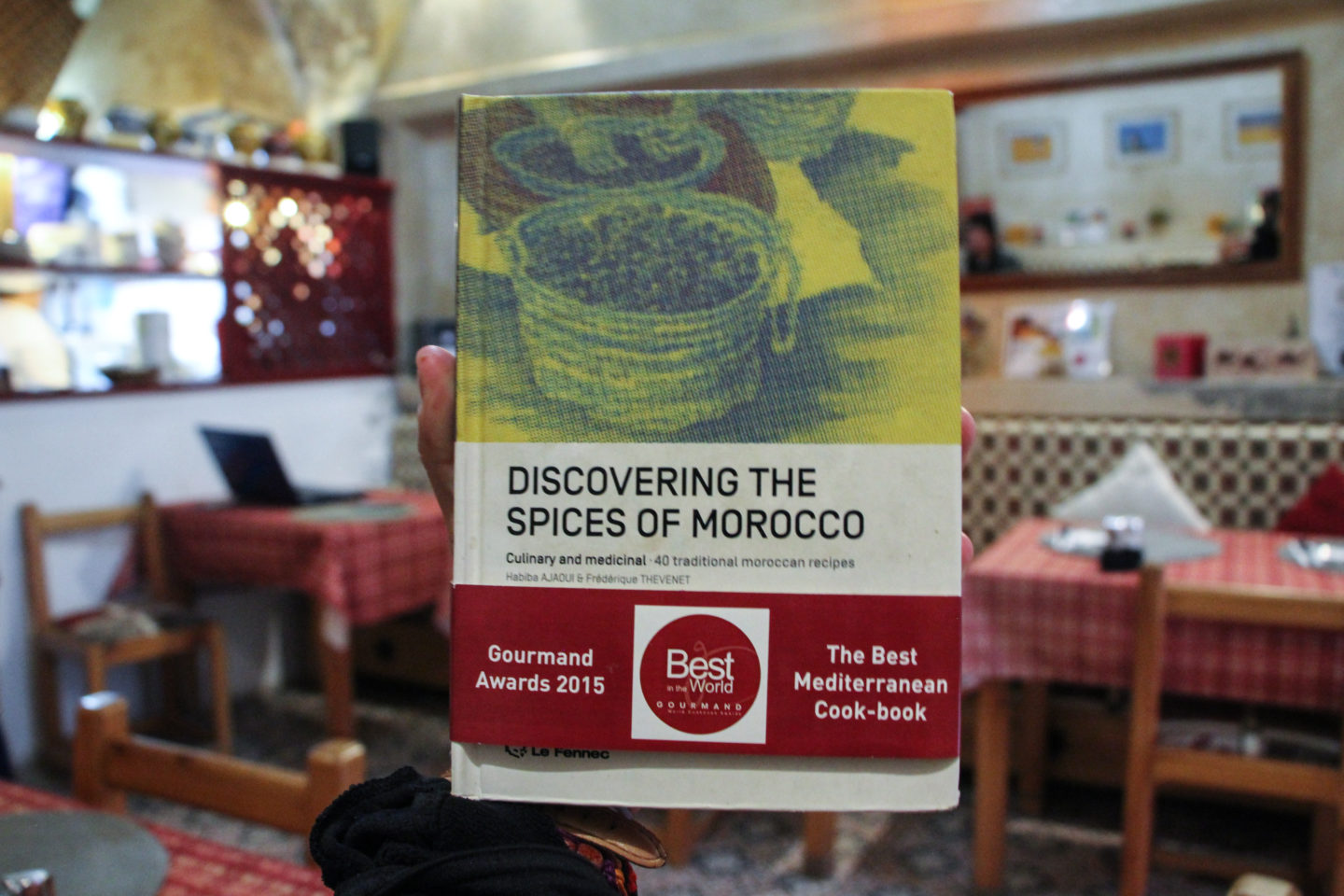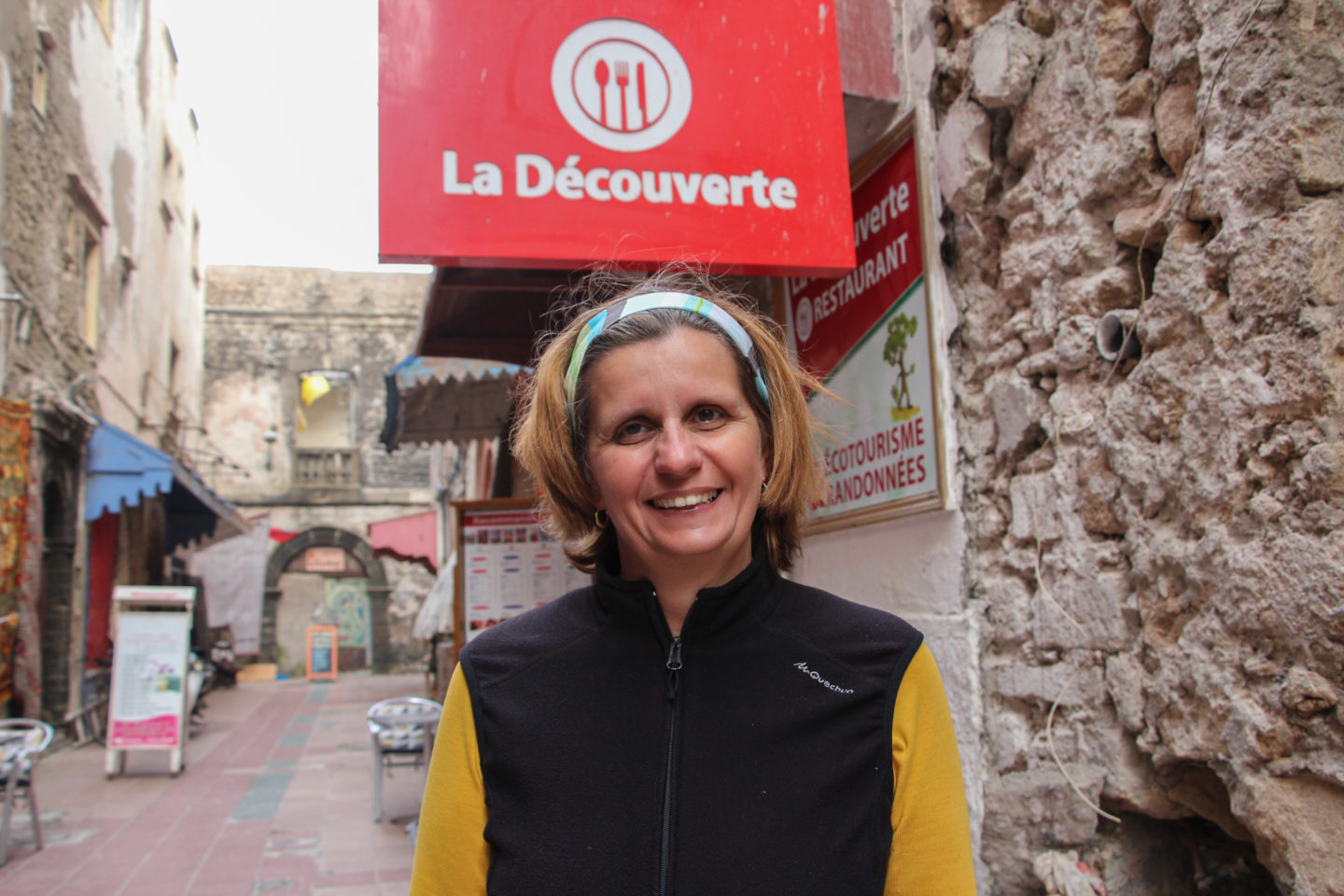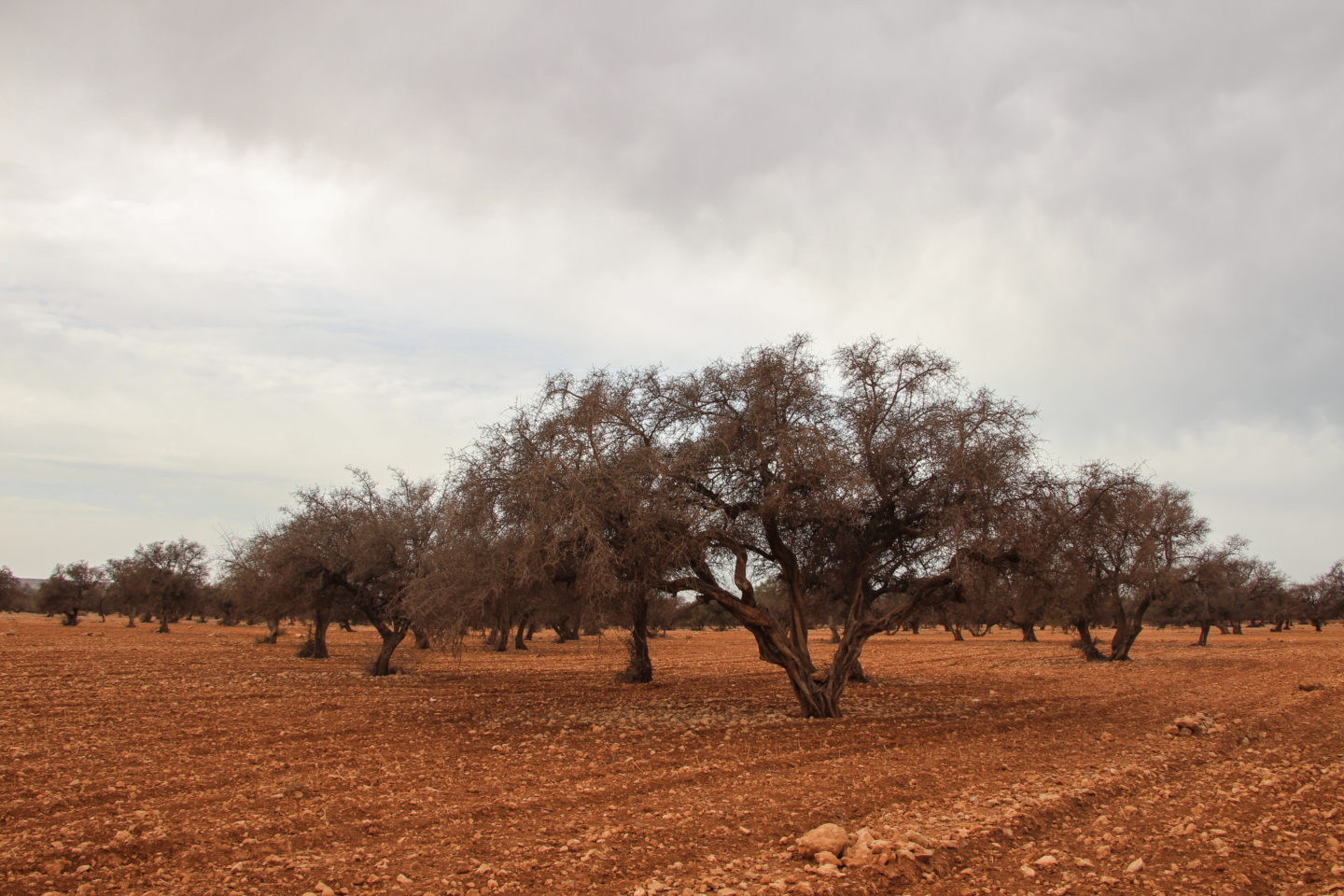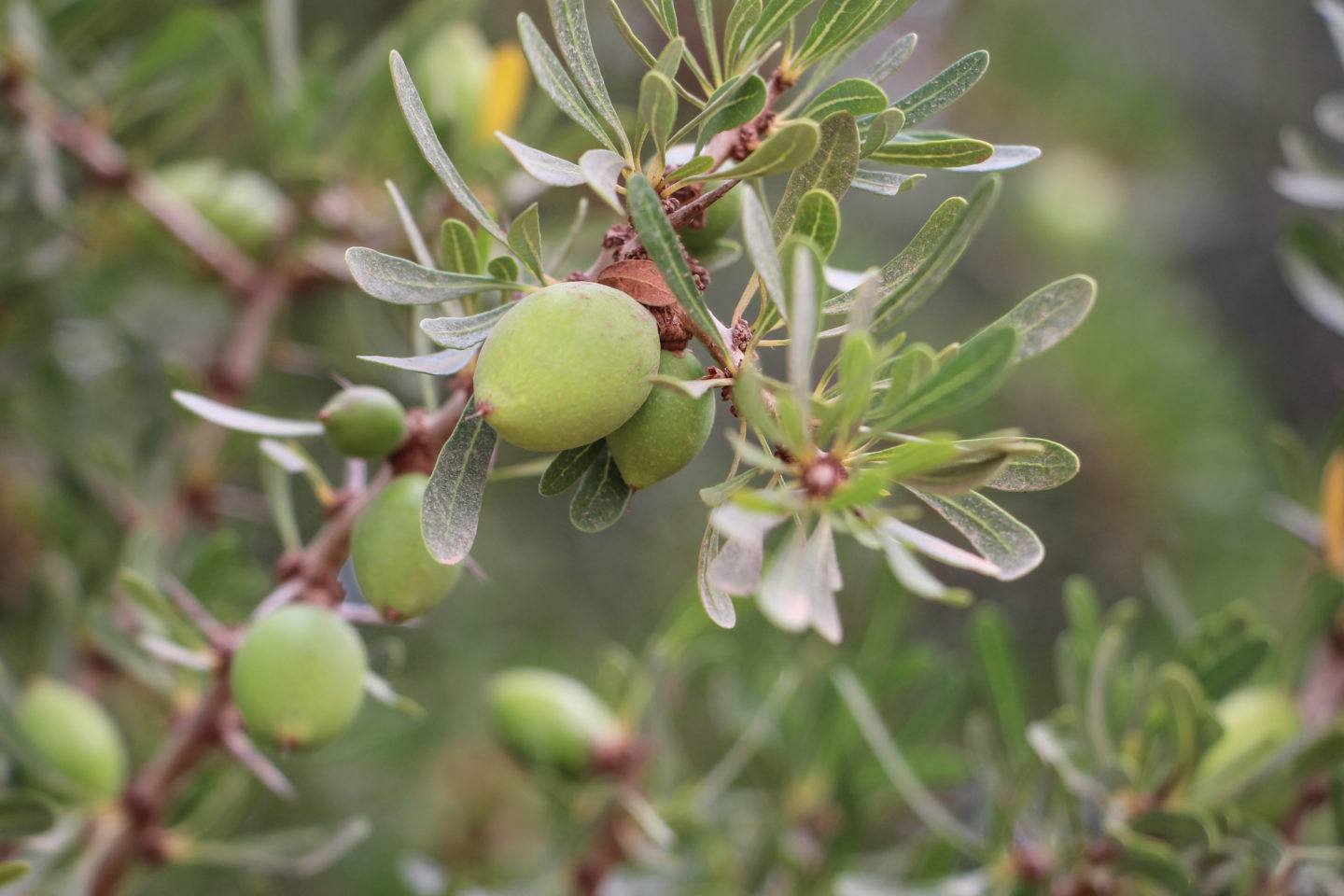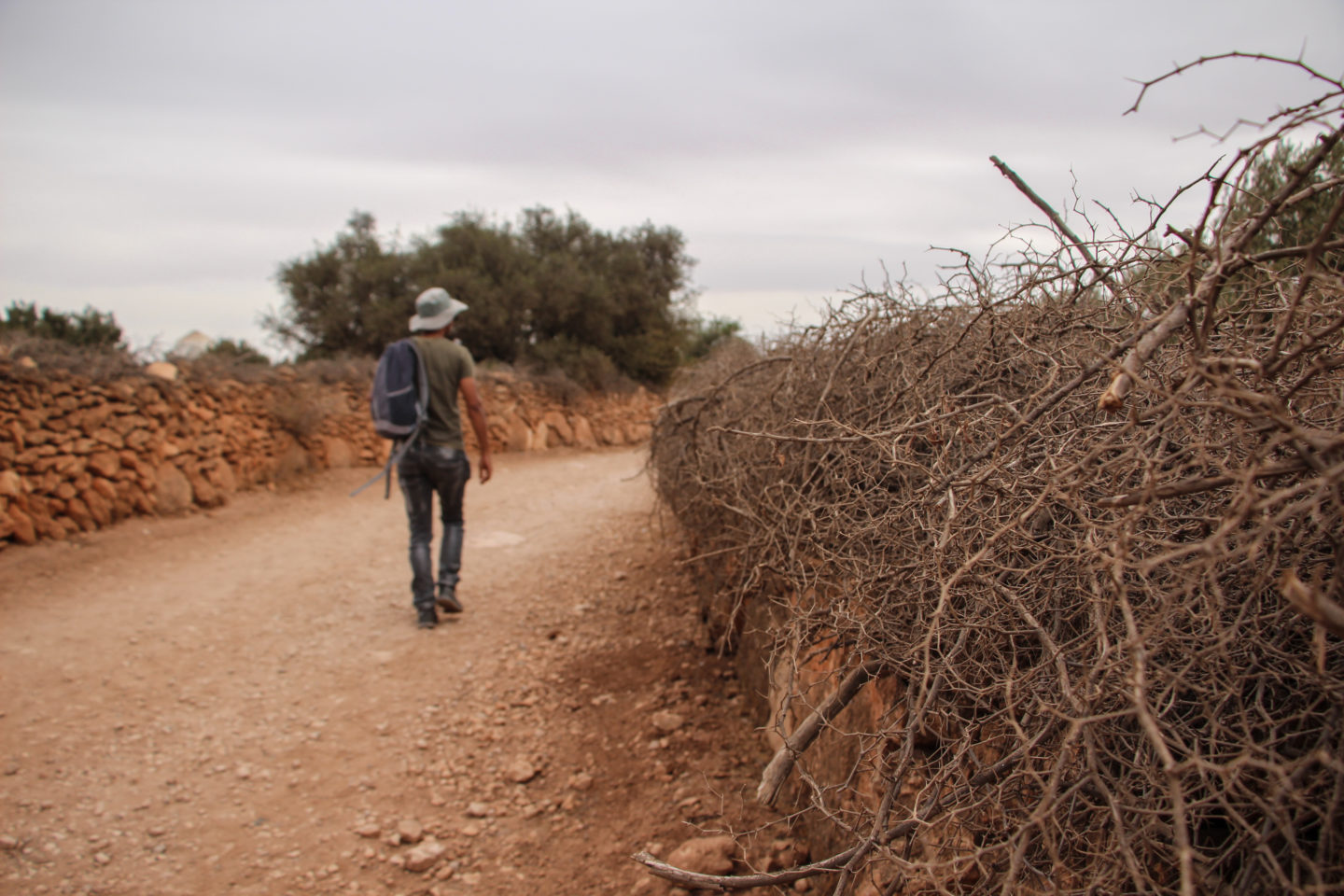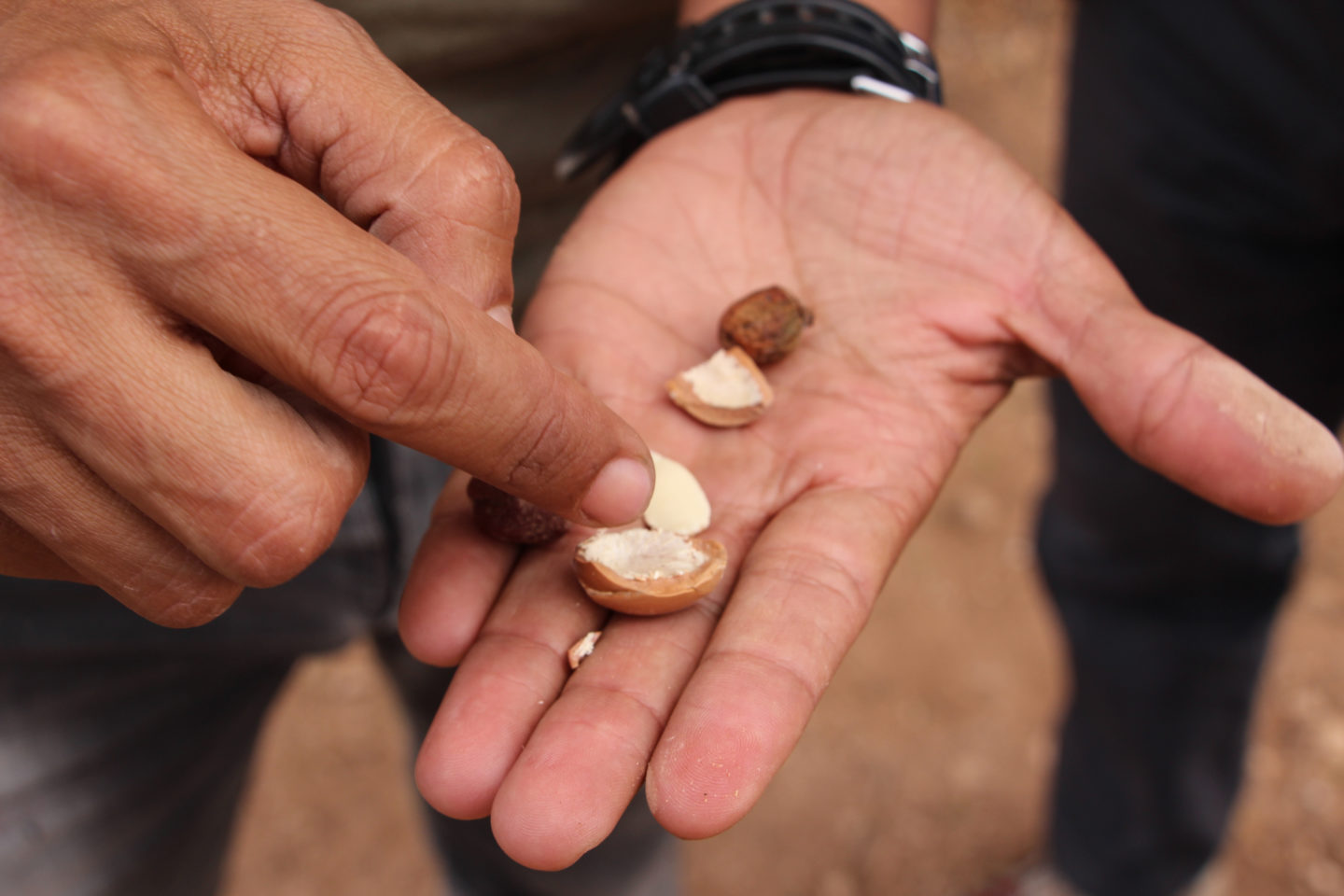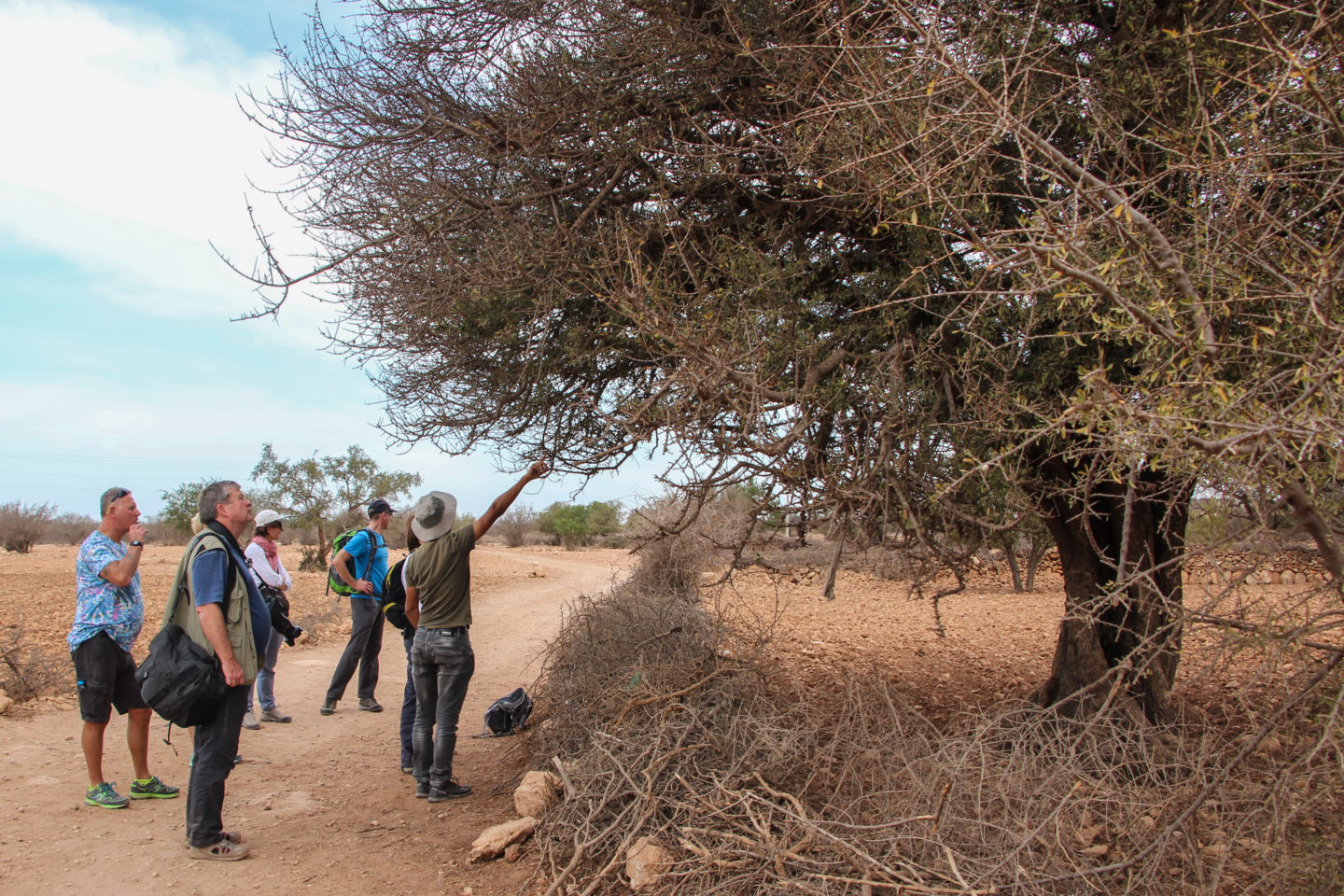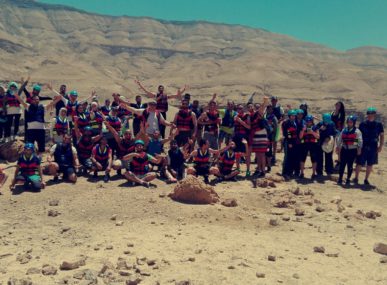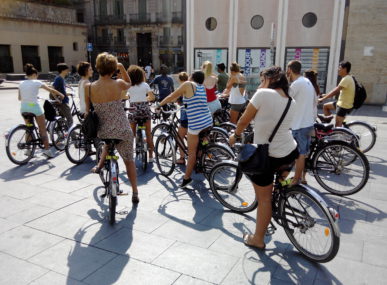Preserving the Moroccan countryside:
Back in the argan tree forest, El Filali explains the importance of preserving the biodiversity of the Souss Valley. Argan trees, alongside Thuja trees, have come under threat for various reasons, including creeping urbanization and the demand for new agricultural space. None, though, is as eyebrow-raising as a certain local scene: goats in trees. “They work as a team, the goats and camels,” El Filali says. “The goats climb and eat the nuts in the branches and the camels eat what they can reach from the ground.”
It is comedic to see, but the impact of goats and other factors is no joke: according to El Filali, what was two million hectares (20,000 square kilometers) of argan trees during the 20th century has shrunk to 830,000 hectares (8,300 square kilometers).
That is not good news for the environment, or for the value that argan fruit brings to the region. Argan oil has become a valuable export in recent years, and is coveted for both cuisine and cosmetics. Ultimately, El Filali says it is a matter of helping locals understand the difference between short- and long-term gain. “People want to let the goats eat because they can sell or eat the animal immediately,” he says. “But argan trees are more long-term than even the olive harvest because they need less water.”
One of the ways Ecotourisme et Randonnées is persuading residents to preserve the argan forest is by providing local Berber families with solar ovens. Left exposed under the intense Moroccan sun, the ovens can cook food just as effectively as a wood-stoked fire or propane tank, albeit more slowly.
“In France, we use a lot of these solar ovens and know the importance of solar energy,” Thevenet says of the stoves, which they have provided to two households. “We wanted to do a little thing to try to have Moroccans understand how important solar is for all of us. Using these ovens also spares you the time of collecting wood in the forest, and saves trees.”
El Filali is the first to recognize that changing the mentality is a process, particularly with these solar ovens. “If people are used to using wood for cooking they want to keep using it because it has a certain taste,” he says. “People also burn the wood to get heat. Solar is really a change to their lifestyle, and getting them to do that can be like asking a Moroccan to drink tea without sugar.”
